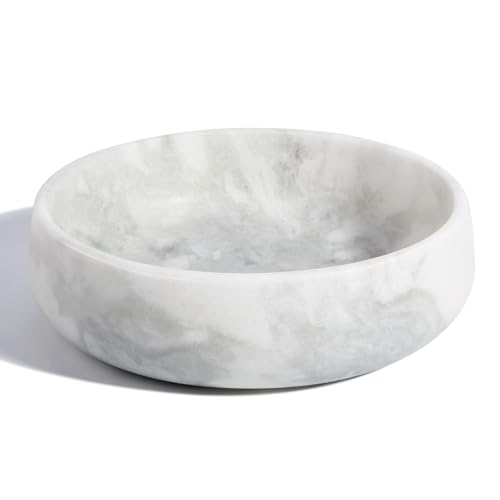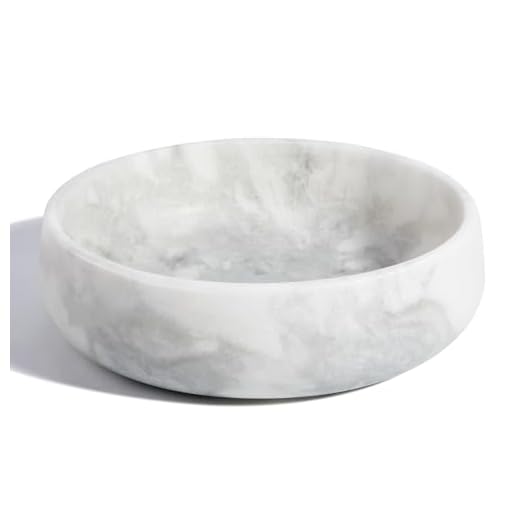




As a pet owner, observing the quirky behaviors of our furry companions can be both amusing and perplexing. One such behavior that often leaves us scratching our heads is when our beloved four-legged friend engages in what seems like an odd ritual during mealtime. Instead of simply enjoying their meal, they interact with their dish in ways that seem to defy logic. This seemingly strange conduct can actually offer a glimpse into their instinctual nature and unique personality.
In this section, we’ll delve into the various reasons behind this uncommon habit. By exploring different aspects such as instinctual drives, environmental influences, and emotional states, we aim to shed light on what motivates our pets to exhibit this behavior. Understanding these motivations not only helps in addressing any potential issues but also deepens the bond between us and our loyal companions.
Join me as we uncover the possible causes behind this unusual activity, from ancient instincts inherited from wild ancestors to simple preferences shaped by their daily experiences. By gaining insight into their world, we can better cater to their needs and ensure that mealtime is a positive and satisfying experience for them.
Common Behavioral Reasons for Upsetting the Dish
Sometimes our furry companions exhibit perplexing behaviors that can leave us scratching our heads. One such behavior is the frequent act of toppling their eating vessel. This section delves into various motivations behind this curious habit, aiming to provide clarity and insight into our pets’ actions.
-
Seeking Attention: Pets often seek our attention in myriad ways. If they notice that overturning their dish garners a response from us, they may continue the behavior to engage with us more frequently.
-
Playfulness: Energetic and spirited, pets sometimes turn mealtime into playtime. They might find the act of flipping their dish entertaining and a way to amuse themselves.
-
Discomfort with the Dish: The vessel itself might be a source of discomfort. It could be too high, too low, or made from a material that isn’t pleasing to their senses, prompting them to knock it over in frustration.
-
Exploration: Our four-legged friends are naturally curious. Overturning their dish could be a way to explore their environment and discover what’s beneath or around their eating area.
-
Instinctual Behavior: Instincts from their ancestors might still influence their actions. In the wild, animals often move their food around, and this inherent behavior could manifest in their domestic life.
-
Boredom: Lack of stimulation can lead to destructive or unusual behaviors. Overturning their eating vessel might be a way to alleviate boredom and occupy their time.
Understanding these underlying reasons helps us address and potentially mitigate the behavior. By observing and interpreting their actions, we can make adjustments to ensure their needs and preferences are met, fostering a harmonious mealtime experience.
Health Issues That Might Cause This Behavior
When our canine companions exhibit unusual eating habits, it can sometimes be a sign of underlying health concerns. Understanding these potential issues can help us address the root cause of the behavior and ensure our pets remain happy and healthy.
Common Health Conditions
Several health conditions can lead to unusual eating behaviors in pets. These conditions may range from dental problems to digestive issues. Recognizing the signs early on can help in managing these health problems more effectively. Here are some common conditions to be aware of:
| Condition | Symptoms |
|---|---|
| Dental Disease | Pain when chewing, drooling, bad breath, loss of appetite |
| Gastrointestinal Issues | Vomiting, diarrhea, bloating, discomfort after eating |
| Allergies | Itching, skin irritation, gastrointestinal distress |
| Anxiety | Restlessness, excessive licking, changes in eating habits |
Steps to Take
If your pet exhibits any of these symptoms alongside unusual eating behavior, it is crucial to consult with a veterinarian. A thorough examination can help identify the specific health issue and guide you towards the appropriate treatment plan. Additionally, maintaining a regular health check-up routine and providing a balanced diet can prevent many of these conditions.
By being attentive to these signs and taking prompt action, we can ensure our furry friends stay healthy and comfortable. Always remember, any sudden changes in behavior warrant professional advice to rule out serious health concerns.
How Environment Can Influence Feeding Habits
In this section, I want to explore how the surroundings and setting of our pets’ meals can shape their eating behavior. It’s fascinating to observe how various factors within an environment can affect the way animals approach their sustenance. From the layout of the feeding area to the presence of other animals, numerous elements come into play, subtly guiding the habits of our furry friends.
Location and Layout
Where we place the feeding station plays a significant role in determining how comfortably and efficiently our pets consume their meals. A quiet and secluded spot might encourage a more relaxed dining experience, whereas a busy area with a lot of foot traffic could cause stress and lead to hasty or erratic eating. I find that pets often appreciate a consistent spot, which can help create a sense of routine and security.
Presence of Other Animals
When other animals share the same space, feeding time can become a competitive or anxious period. The dynamics between pets, whether they’re territorial or harmonious, can influence how they eat. In multi-pet households, it’s crucial to monitor interactions during meal times to ensure each animal gets its fair share without feeling threatened or rushed.
Noise and Activity Levels
The general noise and activity levels in the home can also impact eating behavior. Loud noises or sudden disturbances might make pets nervous or distracted, disrupting their feeding routine. A calm, quiet environment is often more conducive to relaxed and steady eating habits. I always try to minimize loud activities during meal times to create a more serene atmosphere.
Consistency and Routine
Maintaining a consistent feeding schedule helps establish a reliable routine, which can be comforting for pets. Predictability in meal times can reduce anxiety and make eating a more enjoyable experience. I notice that when meal times are regular, pets seem to look forward to them with anticipation, fostering positive associations with their feeding routine.
Understanding the impact of these environmental factors can help us create a more comfortable and nurturing feeding environment for our pets, promoting healthier and happier eating habits.
Training Tips to Prevent Mealtime Mishaps
Mealtime should be a peaceful and enjoyable experience for both you and your furry companion. However, when our pets exhibit certain disruptive behaviors, it can become a source of frustration. In this section, I’ll share effective training methods to help you guide your pet towards more appropriate actions during meals.
-
Establish a Consistent Feeding Schedule:
Maintaining a regular feeding routine can reduce anxiety and create a sense of predictability. Ensure you serve meals at the same times each day to build a structured environment.
-
Use a Weighted or Non-Slip Dish:
Investing in a heavy or non-slip dish can minimize the chances of your pet displacing their container. These types of dishes are designed to stay put, making it harder for your pet to cause a mess.
-
Implement Positive Reinforcement:
Reward your pet for good behavior during mealtime. Offer treats or praise when they eat calmly and avoid disruptive actions. This reinforces the desired behavior and encourages repetition.
-
Interactive Feeders and Puzzles:
Interactive feeders and puzzle toys can engage your pet’s mind and make mealtime more stimulating. These tools can divert their attention away from causing chaos and focus it on obtaining their nourishment.
-
Gradual Desensitization:
If your pet has developed a habit of tipping their dish, practice gradual desensitization. Start by placing the dish in a secure area and reward your pet for interacting with it calmly. Slowly increase the duration they must stay composed before receiving their meal.
By applying these strategies consistently, you can transform mealtime into a more orderly and enjoyable experience. Patience and persistence are key. With time, your pet will learn to adapt to these new expectations, resulting in a more harmonious feeding routine.
Choosing the Right Bowl to Prevent Spills
Selecting the appropriate container for your pet’s meals can significantly reduce the chances of messes during feeding time. This section will guide you through various aspects to consider when making a choice, ensuring both practicality and comfort for your furry friend.
-
Material Matters: Consider options made from different materials such as stainless steel, ceramic, or heavy-duty plastic. Each material has its own set of advantages. For instance, stainless steel is durable and easy to clean, while ceramic options can be heavier and less likely to move around.
-
Weight and Stability: Heavier containers tend to stay put better than lighter ones. Look for bowls with rubber bases or non-slip features to keep them steady during meal times.
-
Design and Shape: The shape can influence how easily it can be tipped over. Wide, flat options are generally more stable compared to taller, narrower ones. Some are even designed with anti-tip features that make them harder to knock over.
-
Size Appropriateness: Ensure the container is the right size for your pet’s breed and eating habits. Containers that are too small or too large can cause frustration and increase the likelihood of spills.
-
Ease of Cleaning: Hygienic containers are crucial for your pet’s health. Look for options that are dishwasher safe or easy to clean by hand to prevent the build-up of bacteria.
By paying attention to these factors, you can find a suitable feeding solution that minimizes spills and keeps your feeding area cleaner. This not only helps maintain a tidy home but also enhances your pet’s dining experience.
undefined
Why does my dog keep flipping his food bowl?
There could be a few reasons for this behavior. One possibility is that your dog is simply playing. Some dogs enjoy manipulating objects with their noses or paws, and flipping the food bowl could be a form of entertainment for them. Another reason might be that your dog is trying to get your attention. If flipping the bowl results in you noticing them and perhaps refilling the bowl, they may continue the behavior as a way to communicate their hunger or desire for interaction.
Is it normal for my dog to flip his food bowl?
Flipping the food bowl isn’t uncommon behavior for dogs, though it can vary from one dog to another. Some dogs may do it occasionally out of curiosity or playfulness, while others may do it more frequently as a learned behavior if they’ve found it gets them attention or results in food being replenished. However, if your dog is exhibiting other concerning behaviors or seems distressed, it might be worth consulting with a veterinarian or animal behaviorist to rule out any underlying issues.







